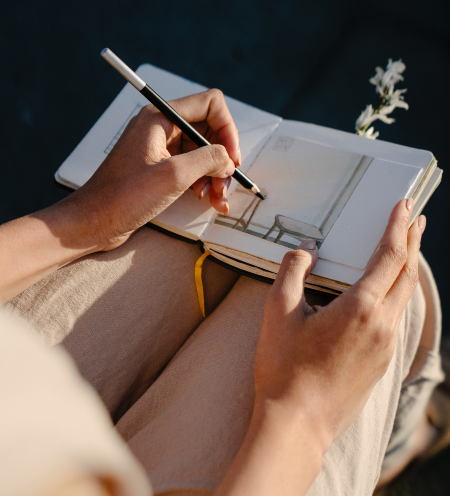
Tips & Tools
Managing your anxiety
20 Types of Journaling: Part Two

By: Cam's Kids Placement Student Nodyia M., Nipissing University
In this article, I will share with you 10 more types of journaling methods as a continuation of "20 Types of Journalling: Part One." Maybe you will find one that pops out to you, and you can start to implement it into your self-care routine.
- Productivity Journaling
Productivity journaling allows you to prioritize your productivity, set realistic goals to achieve, and keep track of these goals and your productivity levels (Intelligent Change, 2022). This can help you prioritize your time better, especially for those who procrastinate; this can help keep you on track (Intelligent Change, 2022).
- Art/Doodle Journaling
Art journaling is similar to a sketchbook. You create art about what has happened during your day or express your feelings through your art piece (SkillShare Blog, 2021). Alternatively, you can just use it as a book to practice your creative side, letting it shine and trying new ways of creating art. It is important to note that you do not need to be an artist to participate in this kind of journaling (Intelligent Change, 2022). Sometimes it may be easier to express how you feel through pictures and drawings because it can be hard to express yourself using words (Intelligent Change, 2022). They also do not need to be extremely detailed art pieces; they can be little doodles (The Gone Goat, 2022). If you do not feel like drawing, you can also print out photos and stick them into your journal or cut specific pictures or words out of an old magazine.

- Visual/Illustrative Journaling
Visual/illustrative journaling is similar to art/doodle journaling, but instead, you tie this more to what has happened during your day (SkillShare Blog, 2021). This type of journaling is kind of like making your experiences from the day into a comic strip. This has the same effect as art/doodle journaling, allowing you to express yourself creatively.
- Personal Junk Journaling
Personal junk journaling is a space where you can vent about your frustrations and write down anything that has made you angry during the day or the past week (Intelligent Change, 2022). This allows you not to bottle up all the negative feelings you are having but instead healthily express them. After writing all your frustrations down, you will probably feel a weight get lifted off your shoulders and, in general, just feel lighter. This can be a very effective way to get out your anger through paper instead of accidentally taking it out on those around you.
- Creative Journaling
Creative journaling is when you write creatively, it can be about anything and in any form, like a poem or a short story and more (GoodWall, 2021). Just let your creative side shine. People find it more beneficial to write out these stories instead of typing them out because physically writing out your ideas may allow you to become more creative, and your creativity can flow more naturally (GoodWall, 2021).
- Ideas Journaling
Ideas journaling is where you can keep all the ideas you come up with and keep them all in a safe space (Intelligent Change, 2022). These ideas do not have to be perfect; they can be crazy, realistic, practical etc., just as long as you get them out of your head and onto a piece of paper (Intelligent Change, 2022). Then, when you look back on your ideas, you may see that some of them connect and make a more extensive and brighter idea. You can write them down, sketch them out or print off photos; it’s up to you! (Intelligent Change, 2022).
- The Blank Notebook Journaling
The blank notebook journaling starts with having a blank journal that can easily fit into your bag. Then, whenever inspiration pops out to you or you want to express how you feel, you can easily grab your blank journal to write these feelings, ideas and inspiration down (Intelligent Change, 2022). You can do anything with this journal, and have all the freedom you could imagine to make it your own.
- Pocket Journaling
Pocket journaling is very similar to blank notebook journaling. However, instead of having a journal that can fit into your bag, this one fits into your pocket (Intelligent Change, 2022). Blank notebook journaling and pocket journaling have the same effect; if inspiration or thought hits you, you can quickly write it down (Intelligent Change, 2022). Since it is a small book, your notes should be bullet points or shortly written; just imagine taking notes in class.

- Sporadic Journaling
Sporadic journaling is when you are not in the mood to journal because maybe you do not know what to write or do not have the motivation to do so. This is where this type of journaling comes into place. Sporadic journaling allows you to focus on a specific topic like self-reflection, seeing the sunset last night and more (The Gone Goat, 2022). This type of journaling can be done in a low key manner, and you can get creative with it by designing your page with colourful pens and pictures. It focuses on taking time out during the nighttime to create something.
- Video Journaling
Video journaling is when you take videos of yourself expressing how you are feeling, talking about your experiences or just venting when you are having a bad day (GoodWall, 2021). After you have finished filming your video, you can either save it or delete it; the decision is yours. This type of journaling might be the best type for those of us that struggle with writing or might get bored of the idea of writing down our feelings all the time. Sometimes it is easier to verbally talk about what might be upsetting or bringing us joy.
There are many journals to purchase if you aren’t interested in creating your own journal. Here are a few:
- The Five Minute Journal by Intelligent Change (Indigo Bookstore ~$26.95)
- The 5 Minute Gratitude Journal by Sophia Godkin (Indigo Bookstore ~$15.34)
- One Line a Day by Chronicle Books (Indigo Bookstore ~$24.95)
- 3000 Questions About Me by Picadilly (Indigo Bookstore ~12.95)
- The Productivity Planner by Intelligent Change (~$29.95)
- Wreck This Journal by Keri Smith (Indigo Bookstore ~$16.00)
- Breathe Mindfulness Journal by Sterling (Indigo Bookstore ~$22.95)
A quick tip: try experimenting with different types of journaling and see which one works for you. Journaling is all about trial and error until you find one that helps you. You can even combine types of journaling and create a way that works for you and that you benefit from.
I love journaling, and I do not do it every day as some people do, and I journal uniquely. I hope this article inspires you to start journaling. After all, I believe it should be a part of everyone’s self-care routine because it is very beneficial, and everyone should try it at least once.
Sources:
https://www.skillshare.com/blog/10-types-of-journaling-for-peace-of-mind/
https://www.healthline.com/health/benefits-of-gratitude-practice
https://www.intelligentchange.com/blogs/read/20-types-of-journals-to-keep
https://www.goodwall.io/blog/types-of-journaling/
https://www.thegonegoat.com/inspiration-and-tips/different-types-of-journals
- All
-
29 Nutrition
Nutrition
- 73 Mindfulness and Relaxation
- 27 Student Life
- 8 Exercise
- 51 Treatments & Therapies
- Anxiety Resources

Don't see what you're looking for? Send us an email!
©Copyright 2024 Cam’s Kids powered by Kids Help Phone
Not-for-Profit Organization. B/N: 921508-5
Thanks for visiting Cam's Kids. Please remember...
Cam's Kids is not a service provider.
If you are in crisis, please call 911 or go to your nearest emergency department. For free, confidential counselling, contact Good2Talk or Kids Help Phone.
Post-secondary students: find your local crisis resource here.

